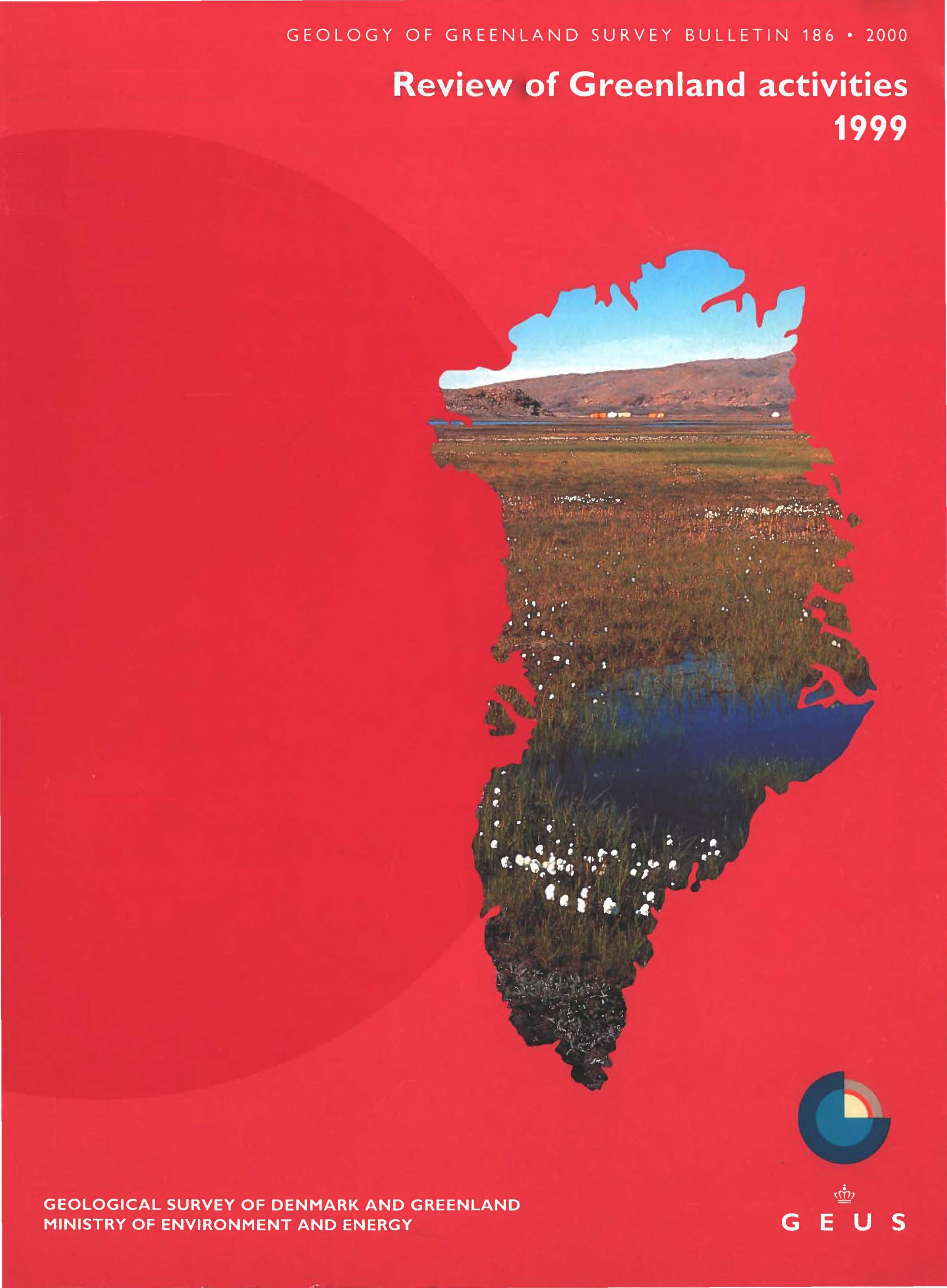Lake sediment coring in South Greenland in 1999
DOI:
https://doi.org/10.34194/ggub.v186.5216Abstract
The transition from the last ice age to the Holocene was a period of extremely rapid and large climatic changes (Björck et al. 1998). Because of this, the period has attracted much attention by Quaternary workers since these fluctuations were first demonstrated by Danish scientists (Hartz & Milthers 1901; Iversen 1934, 1954). In the ice-free parts of Greenland, many attempts have been made over the past few decades to find sediments from this transitional period. Some radiocarbon dates on marine molluscs from the late-glacial have been published, but most are based on conventional dating of several shells that might represent a mixture of Holocene and interglacial material. Conventional radiocarbon dating of lake sediments has also produced a number of ‘late-glacial’ dates, but where checked by accelerator mass spectrometry (AMS) radiocarbon dating, the sediments have proved to be Holocene (Björck et al. 1994a, b). These sediments contain ‘old carbon’ in the form of coal fragments and reworked interglacial organic detritus. In 1999 we tried a new approach to locate late-glacial lake sediments in Greenland. In southernmost Greenland, the shelf is narrow and the land area relatively small. Therefore the amount of glacierization during the Quaternary glacial stages must have been limited. In addition, this region is situated so far south in the North Atlantic that it must have been much influenced by the warming at 14,700 GRIP years BP (Björck et al. 1998). The southern location also means that the temperature conditions would allow a fairly rich plant and animal life to have become established rather early after recession of the ice. Sediment records from lakes located near sea-level at some distance from the outer coast extend back to the earliest Holocene (Fredskild 1973). Lakes situated at higher elevations might have become deglaciated earlier, when the Inland Ice thinned over the coast towards the end of the last ice age. Thus, in the 1999 programme we have sampled high-elevation basins, situated at 350–720 m above sea level (see Table 1). Basins situated in cirque valleys were avoided because it is possible that glaciers would have been present in such basins during the Little Ice Age. However, it turned out that most of the high-elevation basins investigated were devoid of sediments. Even at water depths over several tens of metres, the bottom consisted of stones and boulders and a good sedimentary sequence was only found in a single lake. For this reason, low-elevation basins as far away as possible from the present ice margin were also cored. In addition, it was decided to core a series of isolation basins at different elevations below the marine limit in order to establish a securely constrained curve for the relative shore-level change after the last deglaciation. Many such curves have been published from different parts of Greenland, but they are mainly based on mollusc shell dates which are much more uncertain than dates from isolation basins. The dated molluscs lived at various depths below sea-level and their relationship to the former sea-level is always uncertain. The locations of the cored basins are shown in Fig. 1 and short notes on the lakes are given in Table 1. This work is a continuation of the studies of recent years on lake sediments in South and West Greenland by the Geological Survey of Denmark and Greenland (Anderson & Bennike 1997; Overpeck et al. 1998; Anderson et al. 1999; 2000, this volume; Bennike 2000; Brodersen & Anderson 2000, this volume).
Downloads
Published
Issue
Section
License
This article is distributed under a CC-BY 4.0 licence, permitting free redistribution and reproduction for any purpose, even commercial, provided proper citation of the original work. Author(s) retain copyright over the article contents.


